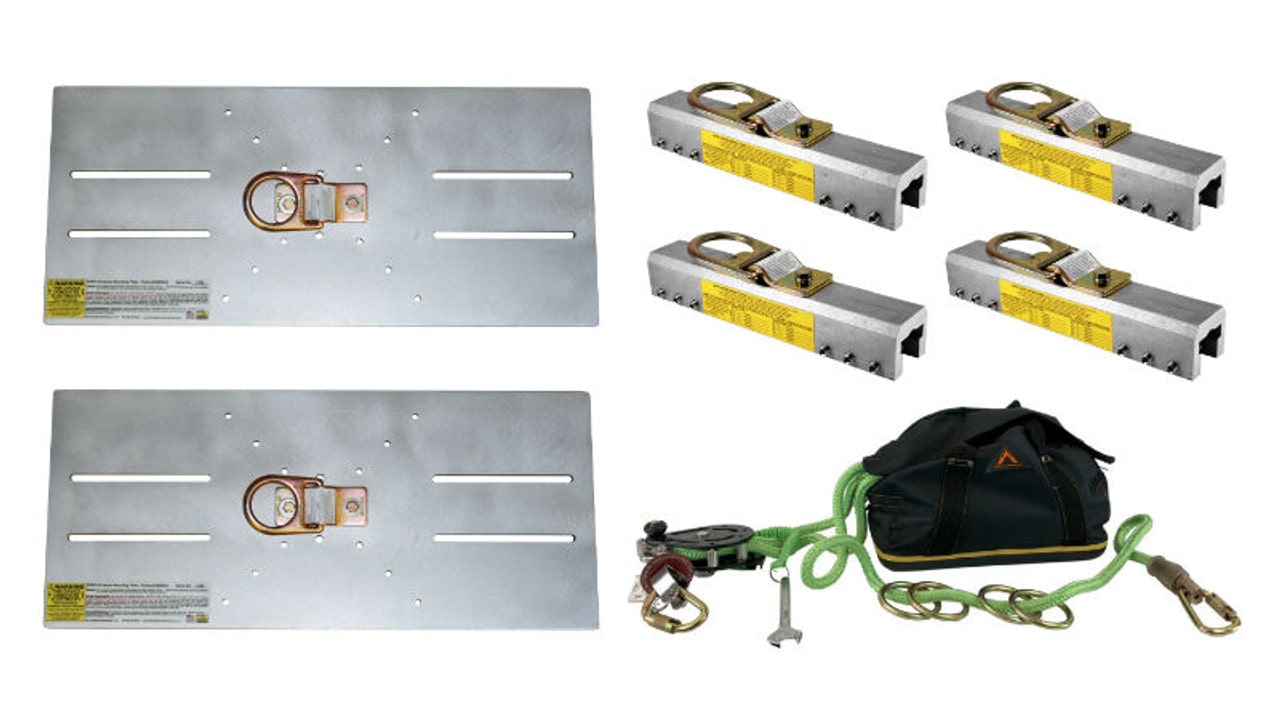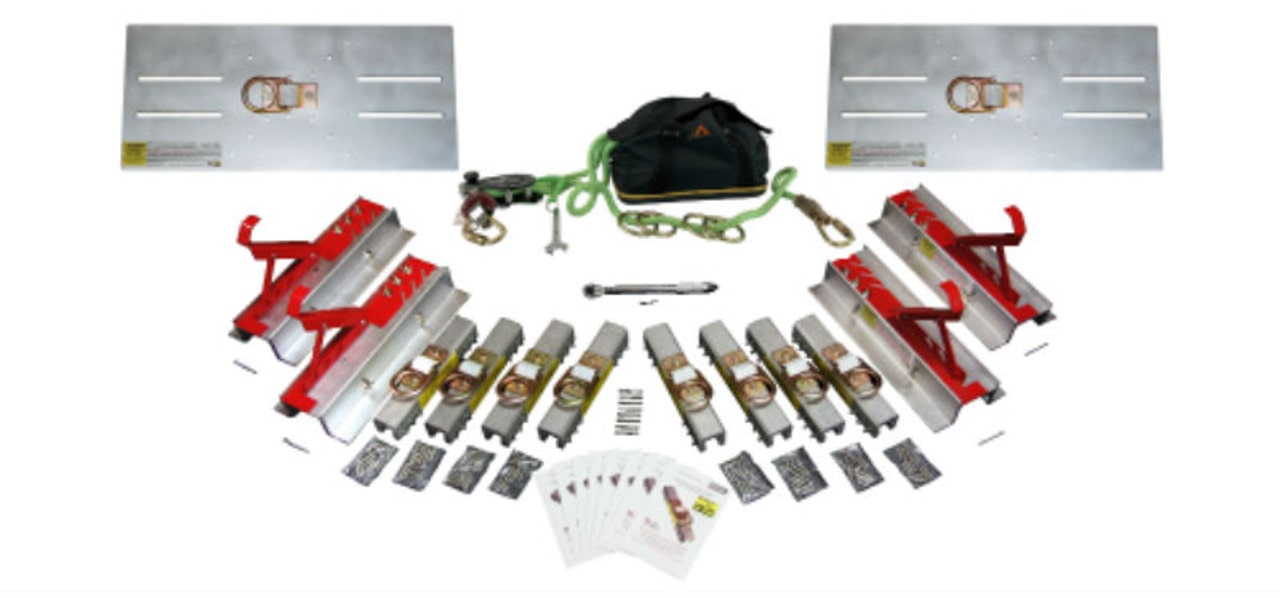What Does OSHA Require For A Horizontal Lifeline?
Posted by Howie Scarboro - CEO Fall Protection Distributors, LLC on Jan 30th 2024
Introduction to Horizontal Lifelines
Did you know that falls are the leading cause of fatalities in the construction industry? According to the Bureau of Labor Statistics, falls accounted for 391 out of 1,007 construction worker deaths in 2020. Fortunately, implementing proper safety measures, including horizontal lifelines, can significantly reduce these numbers.
This comprehensive guide explores everything you need to know about horizontal lifelines, with a special focus on the top-selling Malta Dynamics HLL3001. Whether you're a construction worker seeking to understand these systems or a safety manager responsible for implementing them, this post equips you with the essential knowledge to ensure everyone stays safe on high.
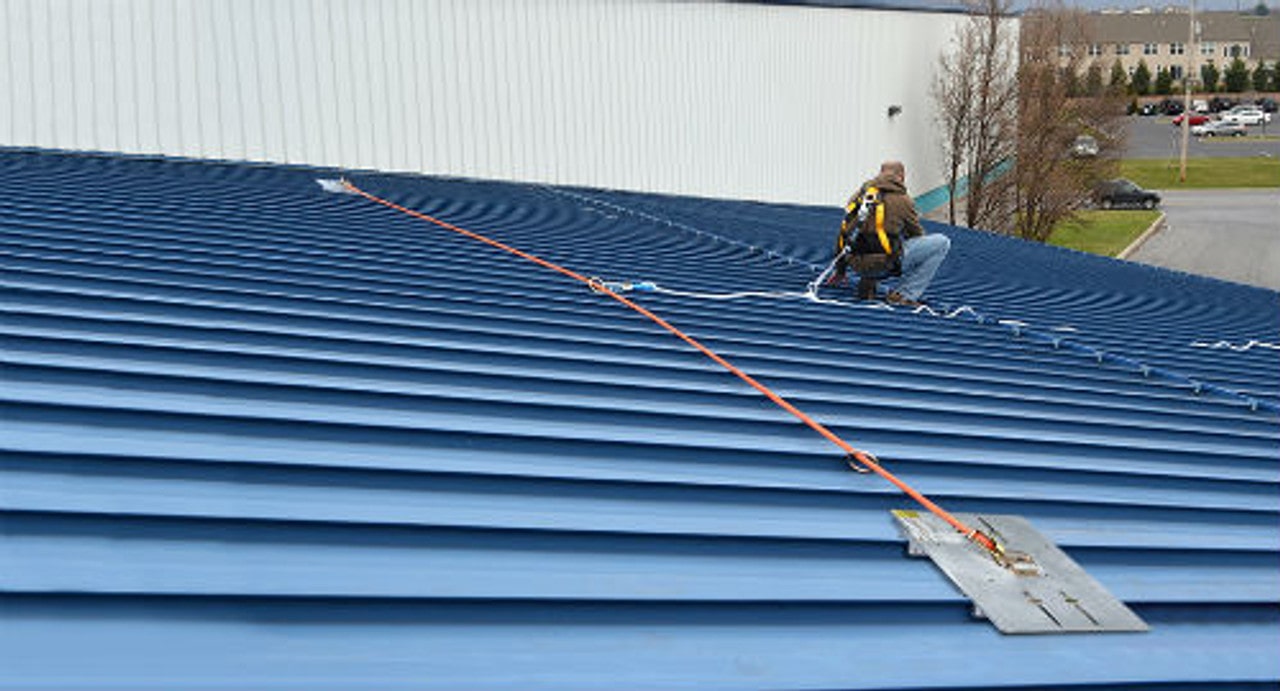
What are Horizontal Lifelines?
Imagine working on a rooftop or suspended scaffold with no guardrails. Scary, right? Horizontal lifelines bridge this safety gap by creating an anchor system that workers can connect to using lanyards, preventing falls altogether while allowing for maximum mobility across the work surface. These lifelines come in various types, including single and double anchor systems, temporary and permanent installations, depending on your specific needs.
Understanding Kernmantle Rope:
The Malta Dynamics HLL3001 lifeline itself is usually made of kernmantle rope, a robust material chosen for its exceptional strength, durability, and resistance to abrasion. Kernmantle rope is considered the only suitable rope for safety and rescue operations. It is designed with the internal core fibers providing the tensile strength, while the outer sheath protects the core from abrasion during use.
OSHA Regulations and Best Practices:
Safety first, always! The Occupational Safety and Health Administration (OSHA) enforces strict regulations for horizontal lifelines (check 29 CFR 1926.502(D)(8) for details). These regulations cover aspects like:
- Qualified person supervision: Installation and use must be overseen by a trained professional.
- Minimum breaking strength: The lifeline must withstand at least 5,000 pounds of force.
- User capacity: The HLL3001 allows for four simultaneous users, exceeding standard two-person limits for added safety.
Remember, adhering to these regulations is not just about legal compliance; it's about saving lives. Additionally, regular inspections and proper setup procedures are crucial for maintaining the lifeline's effectiveness.
Before we dive in, take a minute to watch this brief video from Malta Dynamics explaining the features of their popular 4 person HLL3001 Horizontal Lifeline.
Embed
Introducing the Malta Dynamics HLL3001:
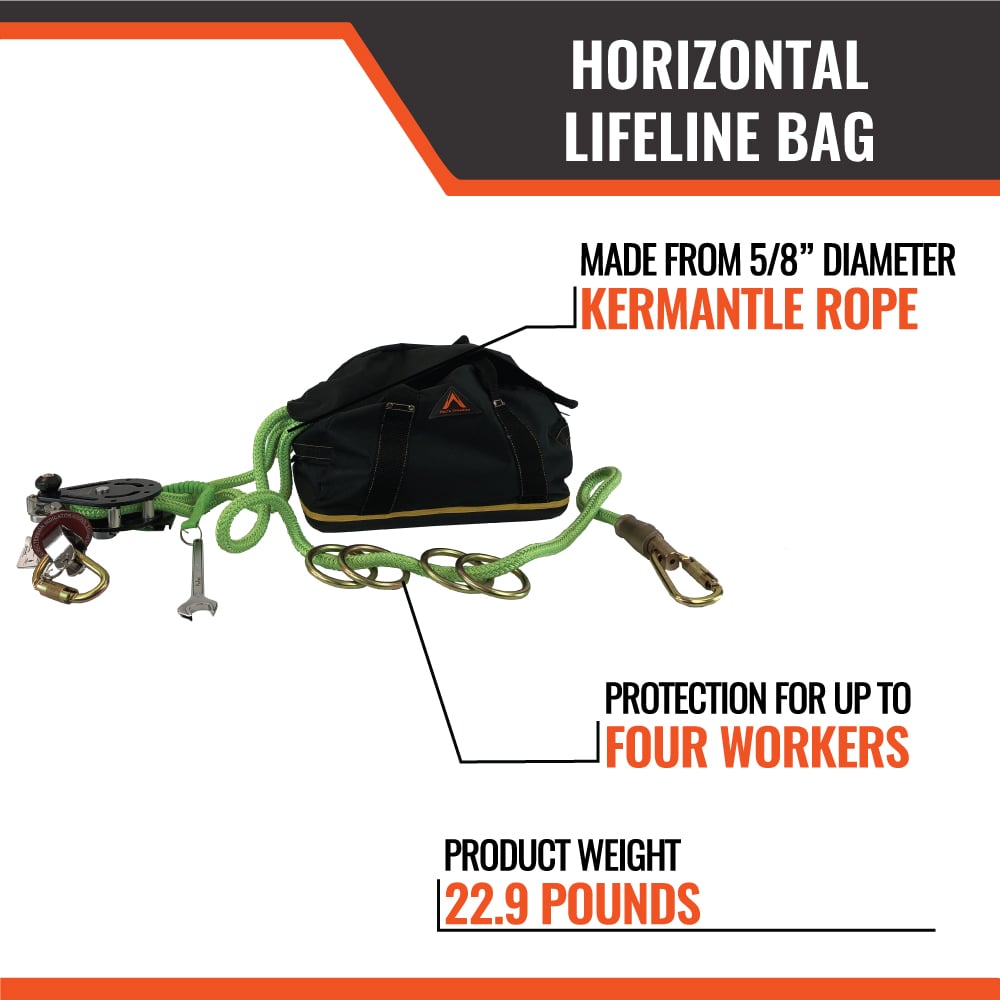
Now, let's talk about the star of the show: the Malta Dynamics HLL3001. This OSHA-compliant horizontal lifeline system offers unparalleled safety and convenience for construction crews. Here's what sets it apart:
- Accommodates up to 4 users: Perfect for larger teams working together.
- 100-foot length: Provides ample coverage for most work areas.
- Lightweight and portable: Easily transport and set up wherever needed.
- Corrosion-resistant materials: Withstands harsh weather conditions.
- Easy setup: Assembles and disassembles quickly, minimizing downtime.
- High-visibility green rope: Enhances worker awareness and jobsite safety.
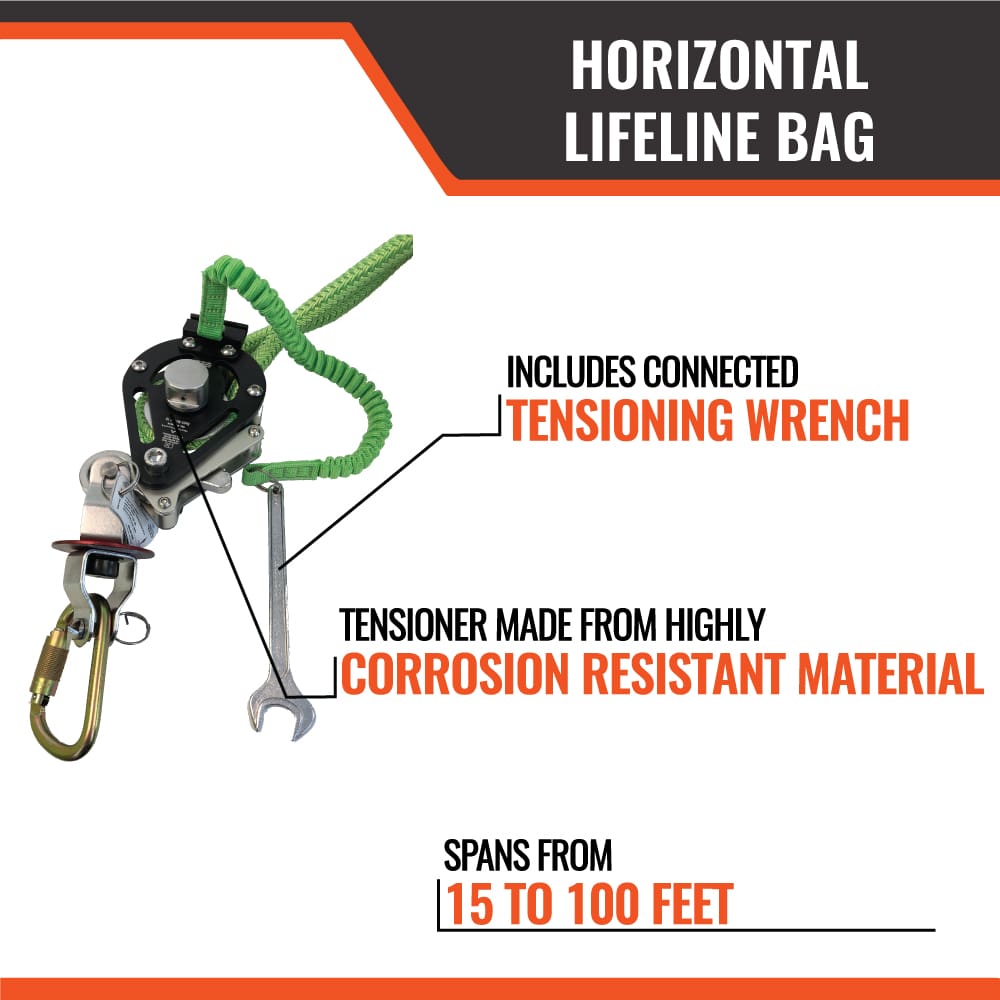
For projects being performed on standing seam roofs, specialized equipment is required with regards to mounting anchor points. Standing seam metal roofs don't allow for penetrations through the panels, therefore attachment to the seams is done with specialized set screws.
There are a few kits available for the deployment of horizontal lifelines onto standing seam roofs. These use the Standing Seam Roof Anchor SSRA1 devices to lock onto the seam with non-penetrating set screws. The SSRA3 Anchor Plates are then mounted onto the SSRA1 anchors to create a reliable and universal-fit anchor point at each end of the horizontal lifeline.
The SSRA HLL kit features the Malta Dynamics 100' Horizontal Lifeline, two SSRA3 Anchor Plates, and four SSRA1 seam anchors. This allows for two workers to work off the lifeline at a time when working on standing seam roofs.
For larger crews, there is also the SSRA Ultimate ProPack. This kit provides everything necessary for larger crews to deploy anchors, horizontal lifelines, and walkboards on standing seam metal roofs with zero penetrations.
Additional Features and Benefits:
The HLL3001 goes beyond the basics:
- Double-braided kernmantle rope: Ensures exceptional strength and durability.
- Highly corrosion-resistant tensioner and carabiners: Built to last.
- Cross-arm straps: Offer versatile anchorage options.
- Includes all necessary components: No need to purchase additional items.
Choosing the Right Horizontal Lifeline:
Selecting the right lifeline depends on various factors like the number of users, work environment, and budget. The HLL3001 excels in versatility and ease of use, making it ideal for various construction projects.
Conclusion:
Prioritizing safety shouldn't be a compromise. Horizontal lifelines like the Malta Dynamics HLL3001 offer a reliable and OSHA-compliant solution to protect your workforce and ensure peace of mind. Remember, investing in safety is an investment in your people and the future of your business.
Ready to make your jobsite safer? Contact us today to learn more about the Malta Dynamics HLL3001 and how it can elevate your safety practices.


